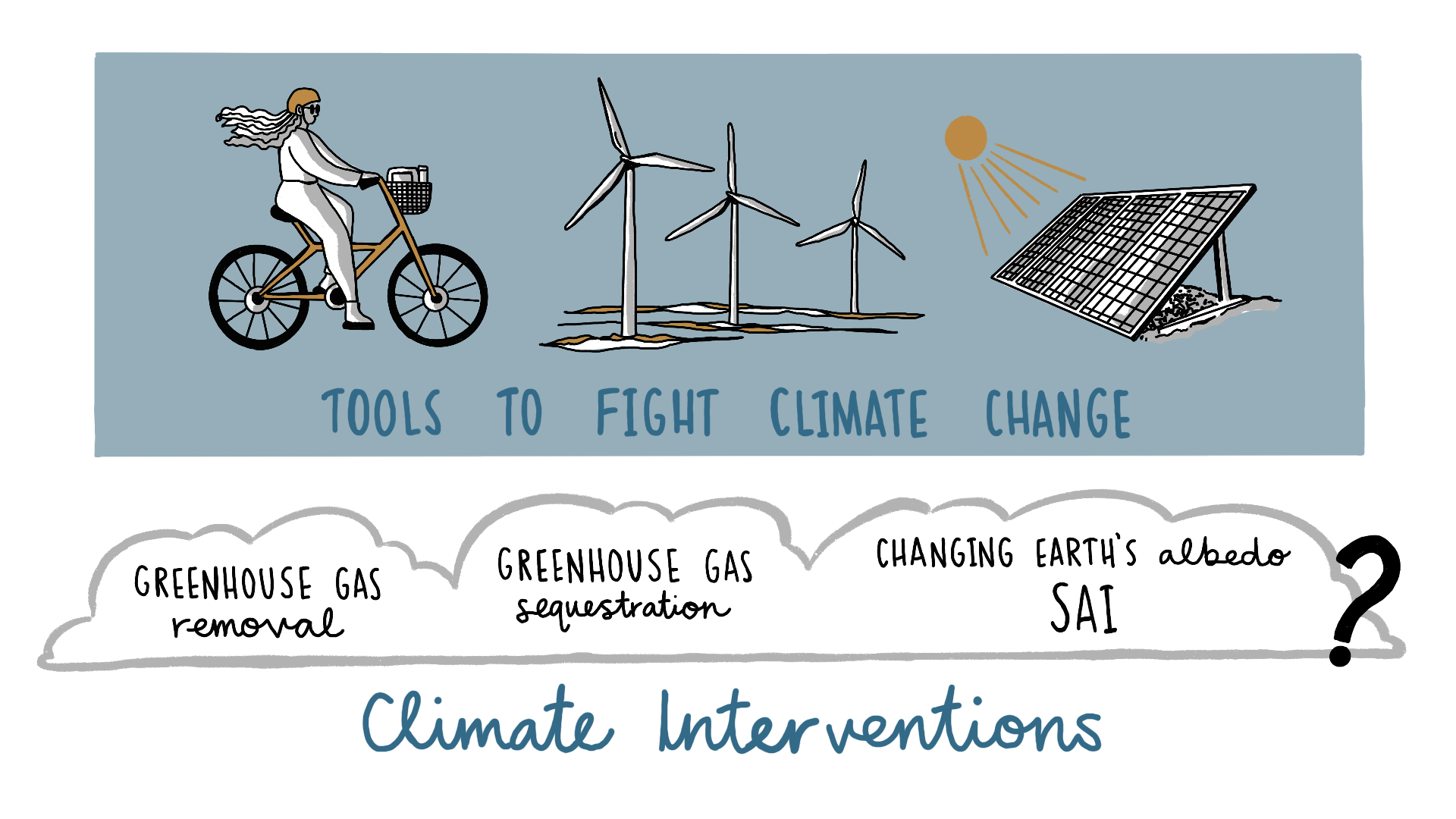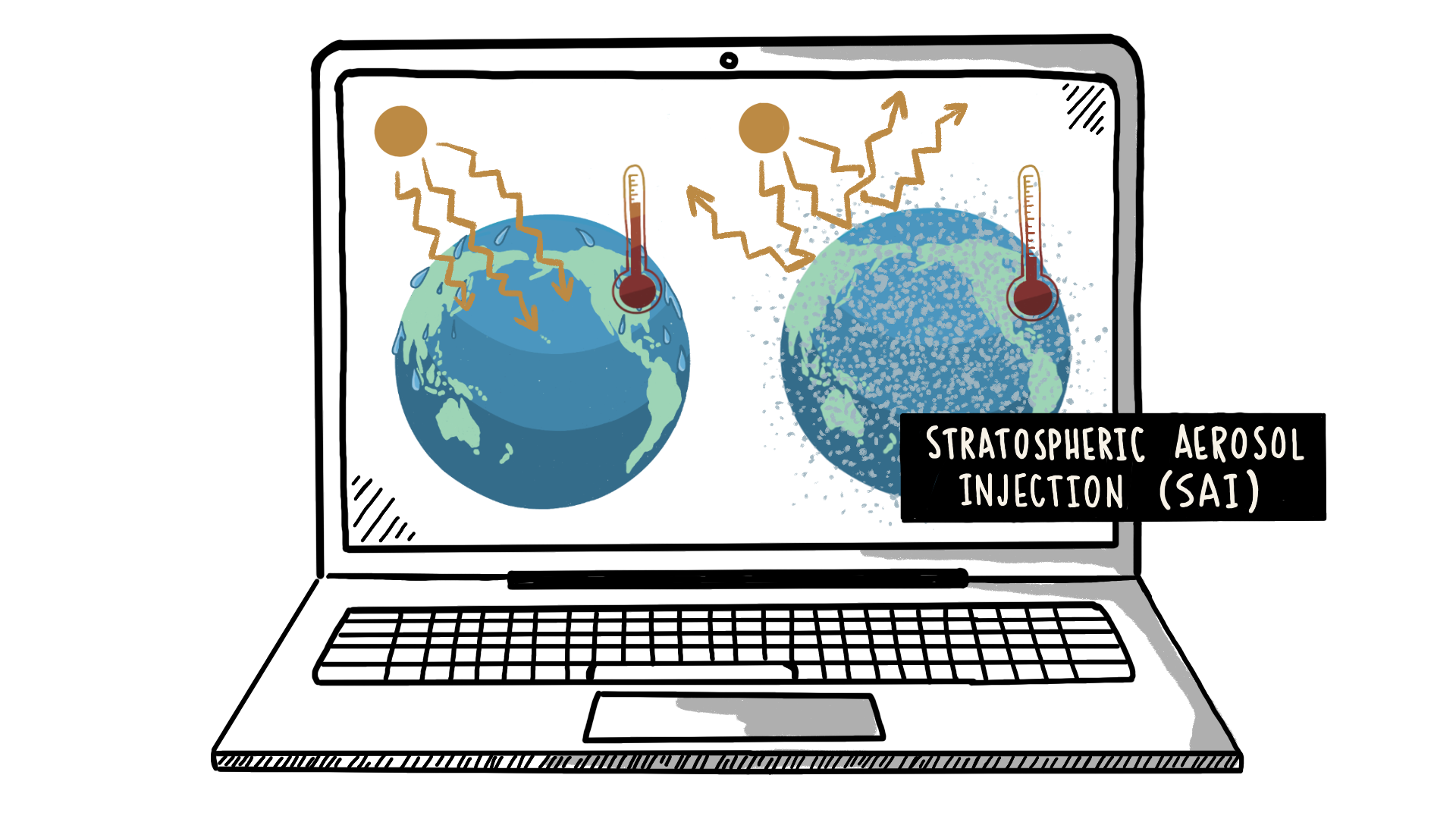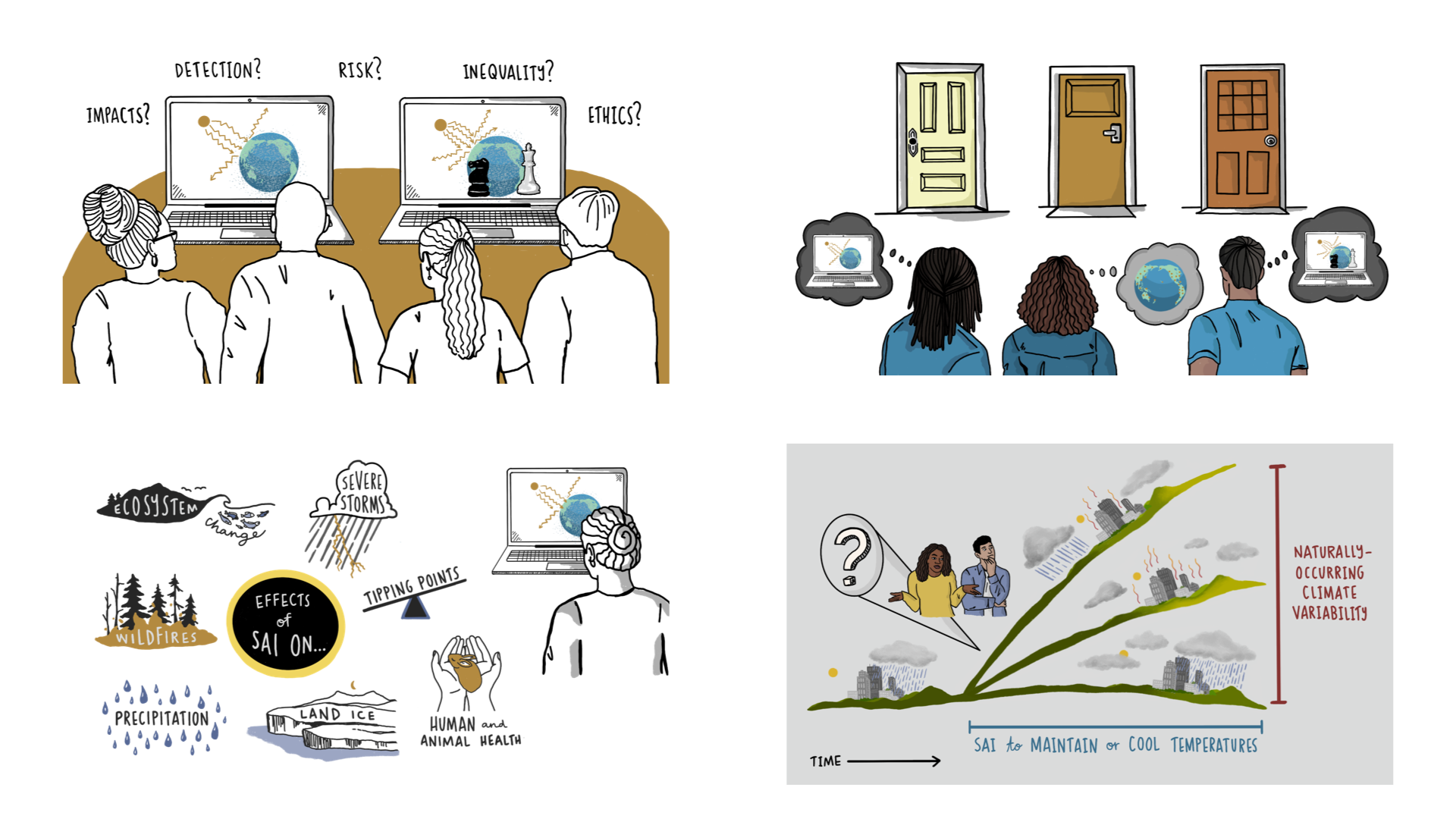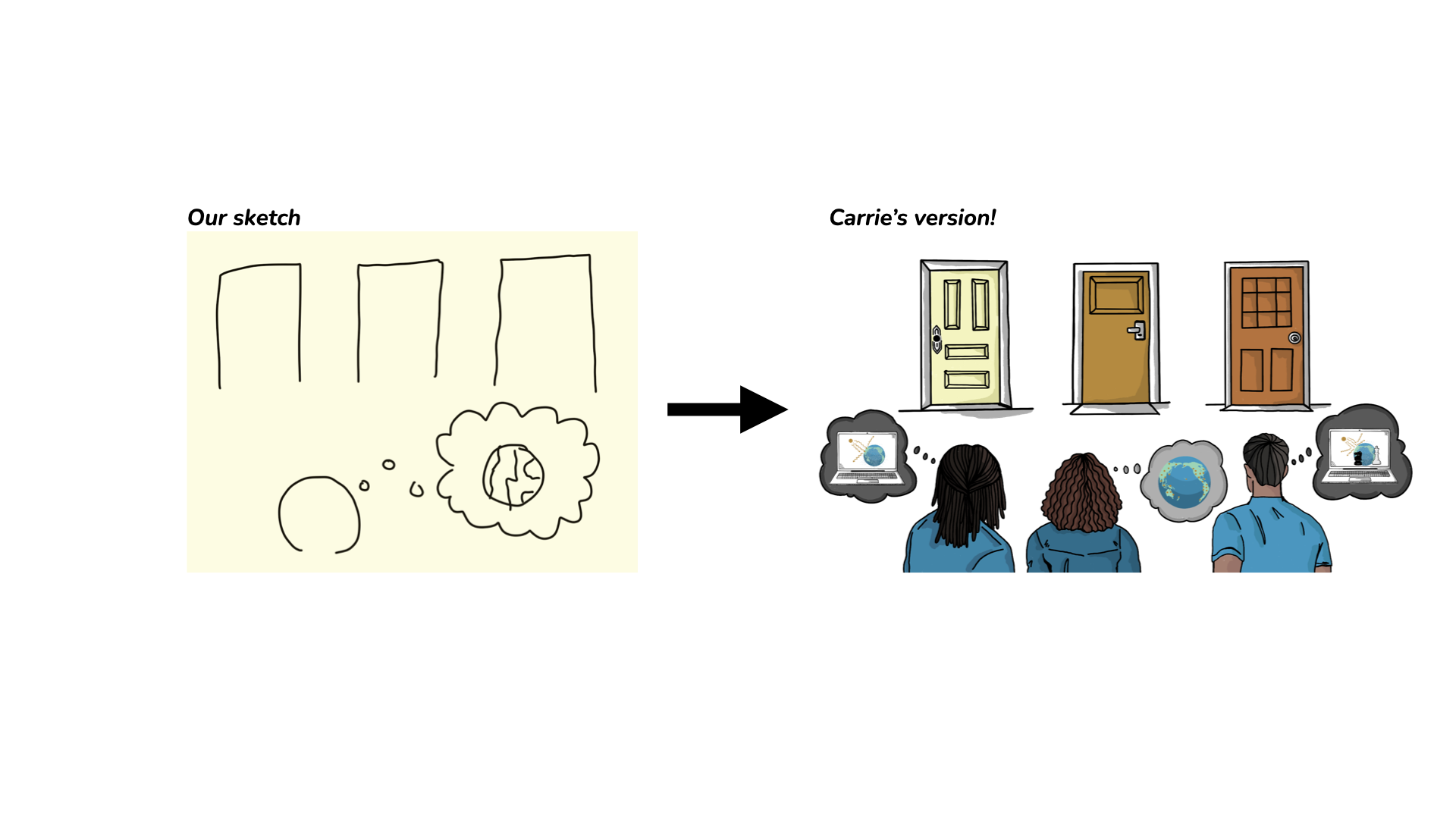What is climate intervention? Unpacking a new field with science and art
Bio: Daniel Hueholt is a PhD candidate in the Department of Atmospheric Science at Colorado State University. He studies potential climate and ecological impacts from climate intervention and climate change.
Hello readers! The Seasoned Chaos team kindly gave me the opportunity to write about a series of four videos I helped create with a team of science and artist collaborators. This series describes research into climate intervention: potential methods to deliberately intervene in the Earth system to counteract climate change. This topic is a bit different than the regularly scheduled programming here–but it’s hopefully still of interest! You can scroll down to the bottom and check out the videos immediately, or read this post for a few more details first.
The Climate Change Story So Far
2023 is likely to be the hottest year in recorded history, and may even become the first individual year to exceed the 1.5˚C above pre-industrial goal of the international Paris Climate Accords. As climate change has continued, the impacts have become both increasingly obvious and personal to us all. In Colorado, where I currently live, we have seen record-shattering heat and wildfires; in my coastal North Carolina hometown, sea level rise causes frequent “sunny-day flooding” and turns freshwater ecosystems into “ghost forests.” Almost everyone can fill in their own experiences with climate-fueled hazards, and these impacts disproportionately affect vulnerable populations that have contributed relatively little to climate change. While governments have pledged to reduce the greenhouse gas emissions that cause climate change, there is still a large gap between these statements and the actions that would be needed to avoid dangerous warming and impacts.
Climate mitigation actions that stop the emissions of greenhouse gases remain the most crucial solution to climate change. Examples of mitigation include approaches such as replacing fossil fuels with renewable energy and investing in clean methods of transportation. Still, the slow pace of these transitions, coupled with the prospect of worsening climate change impacts, motivates research into possible methods to deliberately intervene in the Earth system to reduce climate risk. These are collectively known as climate interventions, and include approaches that remove greenhouse gases from the atmosphere or directly cool the planet. It’s important to be very clear that interventions are not a substitute for climate mitigation! However, these methods could complement mitigation; essentially, climate intervention may be able to “buy time” for more familiar policies and actions to come into effect.

Climate interventions may have the potential to complement other tools to oppose climate change, like renewable energy and carbon-free transit.
Stratospheric Aerosol Injection
One hypothetical intervention under ongoing research is stratospheric aerosol injection, or SAI for short. SAI would involve the emission of reflective aerosol particles into the upper atmosphere to reflect away a small portion of incoming sunlight, thereby cooling the planet. This is similar to natural processes that occur after many volcanic eruptions, which are known to cool the planet for a few years.
Climate interventions such as SAI can sound like science fiction1. But SAI was originally proposed by climate scientists more than 50 years ago, and is now a mainstream area of scientific research. Most advances on this topic have come in the last decade: Scientists study SAI with computer models, in order to not affect the real world, and models capable of reliably simulating the full physics and chemistry relevant to SAI have only recently been developed.

The basic idea of stratospheric aerosol injection (SAI) is to emit reflective particles into the upper atmosphere, where they would reflect away a portion of incoming sunlight. Currently, research on SAI takes place in computer models.
Our Videos
To date, there has been relatively little dedicated science communication about SAI. To provide some general information, our team of physical and social scientists primarily located at Colorado State University worked with the Heartwood Visuals studio to create four short (~2-3 minutes) videos providing a brief overview of climate intervention research. Each video is built around topics that our group’s research could directly address2. You can check out the series below!
1. Introduction to Climate Intervention
- What is climate intervention?
- How and why do researchers study climate intervention?
2. Stratospheric Aerosol Injection Scenarios
- How do researchers design hypothetical futures of SAI?
- What are the broad classes of hypothetical future SAI interventions?
3. Collective Actor Scenario Impacts
- What are some potential impacts from an SAI deployment collectively designed by the global community?
- What impacts are researchers more confident or less confident about?
4. Detection & Perception
- Would scientists be able to verify whether SAI was affecting the climate?
- How would societies perceive SAI deployment in relation to chaotic day-to-day weather?

Still images from the four videos–”Introduction to Climate Intervention” (top left), “Stratospheric Aerosol Injection Scenarios” (top right), “Collective Actor Scenario Impacts” (bottom left), and “Detection & Perception” (bottom right). Check out footnote 3 for a short description of the behind-the-scenes process!
The discussion of climate intervention touches on issues that are not limited to physical science, but include social science, ethics, governance, and more. In developing our videos, we saw the advantages of approaching this broad topic with a team spanning different disciplines of science and art. Many of our team members are physical scientists, which helped us identify the main research areas and questions to discuss, while insights from social scientists were key to framing the human elements of the future. Meanwhile, it takes an artist’s craft to present this information in a way that’s actually interesting! We hope these videos can serve as a useful starting point to help demystify the topic of climate intervention.
Footnotes:
- Sometimes these methods do appear in science fiction! You might recognize SAI or similar approaches to reduce incoming sunlight from Kim Stanley Robinson’s The Ministry for the Future, or a much more negative portrayal in the second season of Star Trek: Picard.
- There is much more to this discipline than what we could cover in these videos. The following works are great resources for anyone who wants to learn more about a broader picture of climate interventions, including SAI:
- Our team consisted of a group of physical and social scientists (including Seasoned Chaos’s own Marybeth Arcodia!) primarily located at Colorado State University, and was composed of graduate students, postdoctoral researchers, and professors. While many of us focus on SAI in our own work, several members of the team had different research areas (ranging from subseasonal predictability to mesoscale-climate interactions). The team broke into four small groups to write the first draft for each video and sketch “concept art” for the graphics. These drafts were then refined by further iterations within our team, and assessed by three independent reviewers who provided a fresh perspective on the final draft. After this came the best part of the process: watching the art and videography come to life through Carrie van Horn of Heartwood Visuals! Carrie turned our sketches into fully-realized artwork, and her artist’s eye caught places where our scripts were unclear or our visual concepts could have been misleading. In all, the process from the initial formation of our team to publishing the final videos online took approximately one year.

An example from “Stratospheric Aerosol Injection Scenarios” of how Carrie turned our concepts into fully-realized artwork!